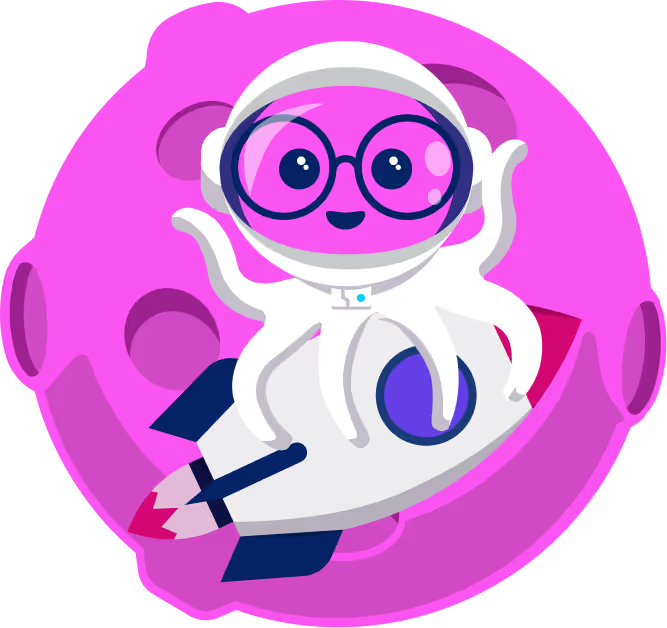Today, I’m incredibly proud to share that Spekit has raised a $45M Series B, just nine months after closing our $12.2M Series A. The round was led by Craft Ventures, with participation from Felicis, Operator Collective, Matchstick Ventures, Renegade Partners, Foundry Group and Bonfire Ventures.
Since closing our Series A, we’ve focused on building out a world-class executive team, strengthening the foundation of our product and cultivating customer relationships. All of which has allowed us to identify where we need to double down…and the path forward have never felt more clear to me. This next chapter is about scale, it’s about bringing Spekit to the masses, it’s about building kickass revolutionary features…and, it’s about data.
Truth be told, when Zari and I started the company in 2018, I don’t think either of us would have believed I’d be writing that first sentence. Wow.
We didn’t launch the company because of some grand aspiration to become entrepreneurs. "We were just two people who were tired of doing things the way they’d always been done," says Spekit CEO & co-founder Melanie Fellay.
We were over trying to educate employees with Powerpoints, LMS courses, lengthy training manuals or Zoom sessions that everyone seemed to quickly forget the moment they got back into their day-to-day.
We were sick of getting the same questions over and over on how to complete a process or use a tool because they couldn’t easily find the answers.
But, more than any of that, we looked at how much the workplace has evolved over the last ten years and couldn’t believe that we’ve changed every aspect of how work gets done but haven’t innovated at all on how we actually train people to do that work.
So, we set out to solve for a single problem: How do we make sure that each individual on our team knows what they need to know, when and where they need to know it?
What I didn’t realize at the time was that this desire to make things easy and useful for our employees would take us down the path of flipping the entire current “approach” for learning on its head and reinventing it for the better.
Over the last four years, we’ve grown the team to more than 130 employees – adding close to 100 team members in the last year alone, increased revenue 300% year-over-year and welcomed some of the most market-defining companies as customers including Snowflake, Outreach, PagerDuty, OwnBackup, Southwest Airlines, Invesco and more.
And, while the world has changed dramatically over this time, the problem we’re solving is more urgent and apparent than ever before:
- Going remote has made it difficult or impossible for many companies to continue to use the same training methods they used just a few years ago.
- Key employees such as sales reps are turning over at an ever increasing pace seeking higher wages, more purpose, better training, or improved quality of life.
- SaaS usage has skyrocketed with the average organization now using 110 SaaS apps. This means more tools and processes to learn than ever before.
As a result of all these challenges, we’re seeing mastery and productivity at work dying at an accelerated rate – and, painfully. The impact of this is felt across the entire organization on a daily basis.
If you’re responsible for revenue, there are significant implications for how long it takes employees and sales reps to onboard, learn, and retain important information and processes.
If you could reduce your sales rep onboarding time by 50%, what would that do for your revenue goals?
If you’re responsible for hiring, organizations with a strong onboarding process improve new hire retention by 82%. LinkedIn’s 2020 Global Talent Trends Report notes that companies that rank highly for employee training see 53% lower attrition.
Imagine the impact of retaining your top talent, longer.
And, the list goes on. Because regardless of your role, everyone could use more time in their day. Everyone benefits from having access to crucial information, faster.
Everyone inherently wants to learn, it’s our job to make it easy for them.
So what is the future that we’re fired up to create?
A future where every new hire feels confident and secure when taking a bet on a new career because they’ll have all the knowledge they need to be successful, right when, where and how they need it. They won’t even have to search for it. Heck, they might not even know they need it….but Spekit will.
A future in which employees can measure and track progress on their path to mastery on a day-to-day basis and understand the impact it’s having on their results and the growth of the business.
A future where learning and training is automatically recommended to employees based on their behaviors and performance, allowing valuable manager and employee conversations to be focused on deal strategy, building connections or the areas they’re needed most. How much faster will reps master selling with that kind of automated coaching? How much better at selling will they be?
Since closing our Series A, we’ve focused on building out a world-class executive team, strengthening the foundation of our product and cultivating customer relationships. All of which has allowed us to identify where we need to double down…and the path forward have never felt more clear to me.
This next chapter is about scale, it’s about bringing Spekit to the masses, it’s about building kick-ass revolutionary features…and, it’s about data.
We’re already on this path today and, with the close of this latest round, we’re taking another giant leap forward into the future of learning at work. Thank you to all of our customers, champions, employees and investors for helping to make this possible. We can’t wait to share what’s next!
#SpekitToTheMoon








